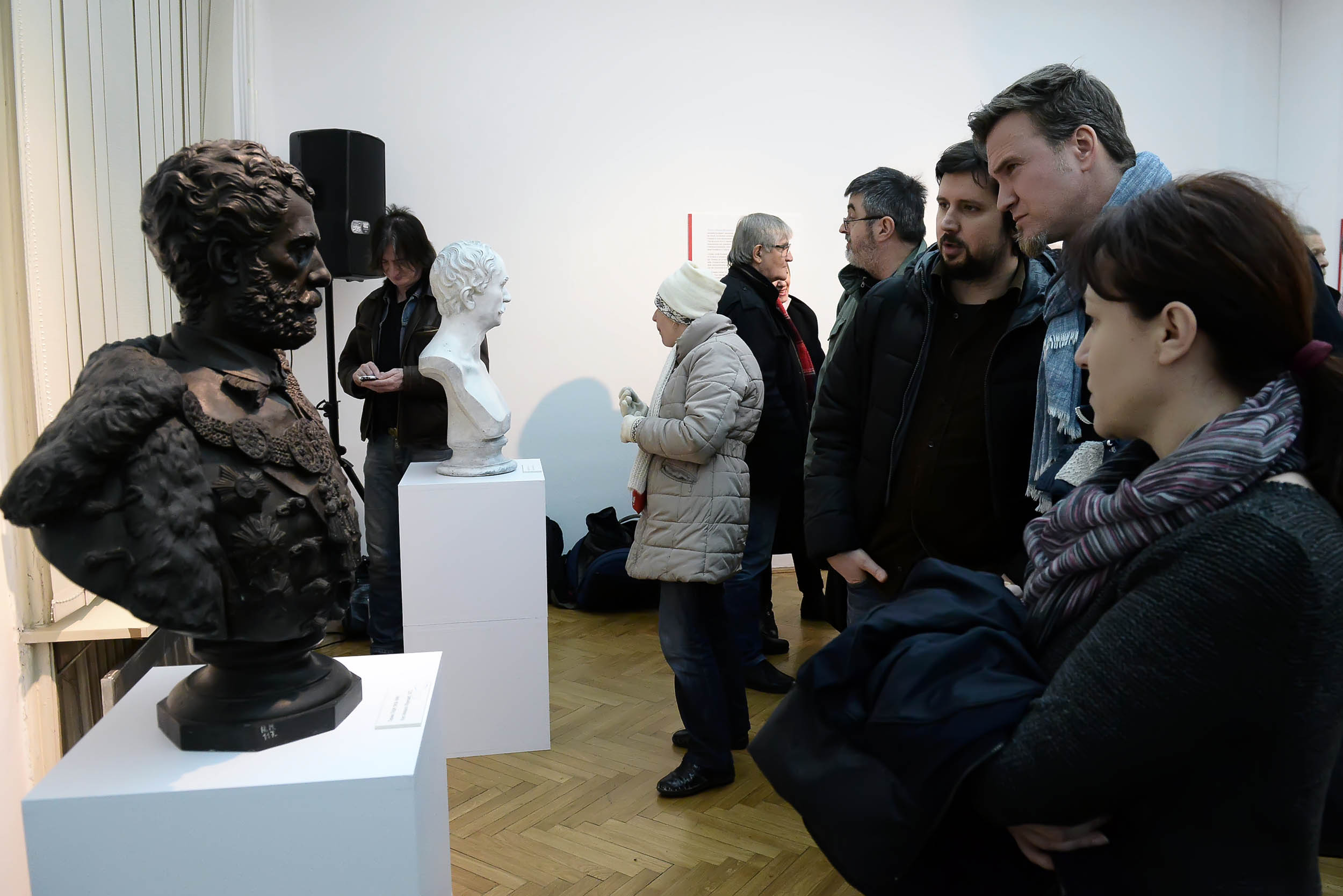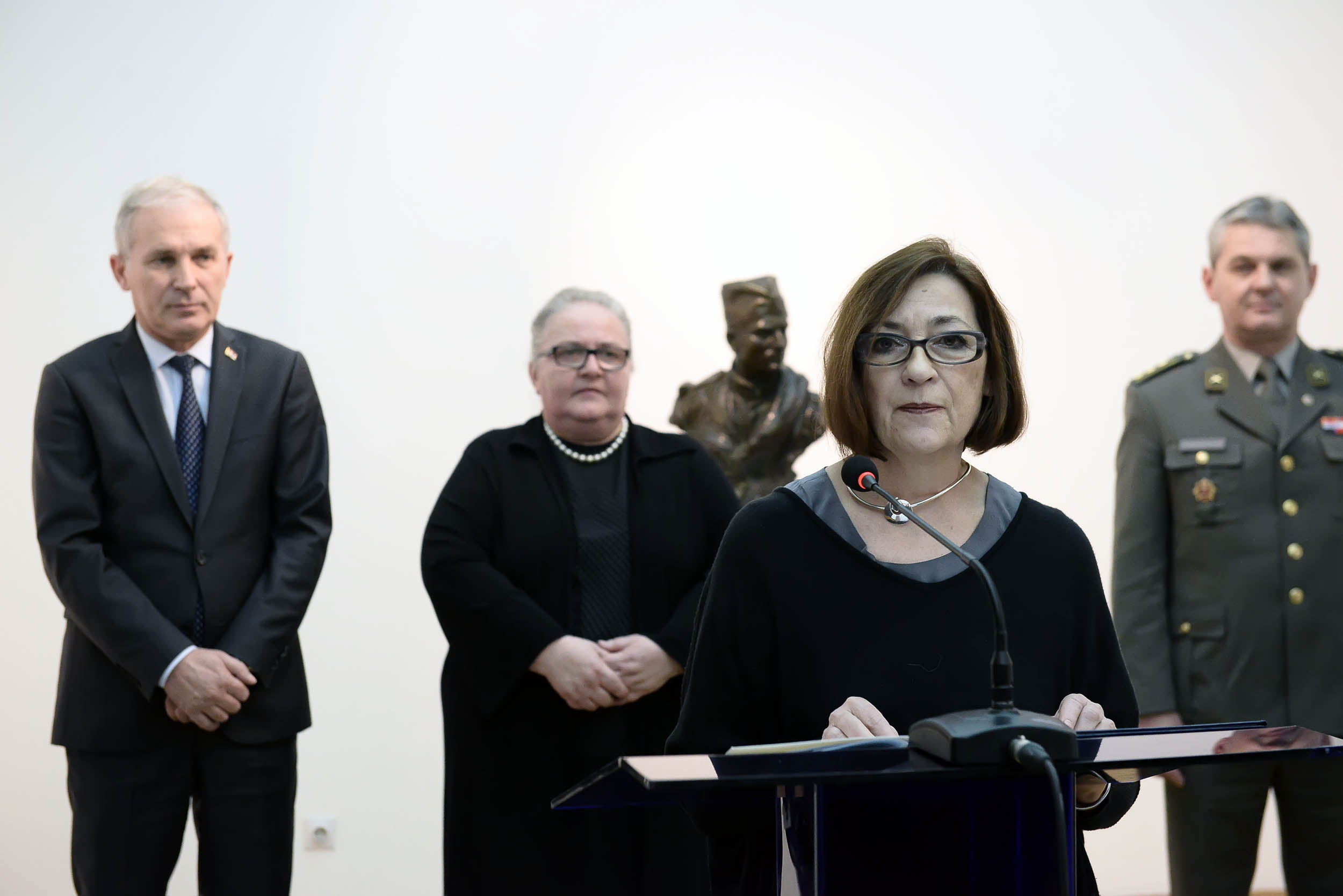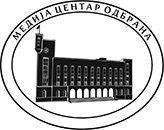17.02.2017
The Exhibition “Sculpture in the Service of History” Was Opened
 CLICK FOR VIRTUAL TOUR!
CLICK FOR VIRTUAL TOUR!  Today, in the Great Gallery of the Central Club of the Serbian Armed Forces, the Media Centre “Odbrana” and the National Museum in Belgrade presented a joint project – an exhibition “Sculpture in the Service of History” by the author Vera Grujić. The exhibition was opened to mark the Statehood Day of the Republic of Serbia.
Today, in the Great Gallery of the Central Club of the Serbian Armed Forces, the Media Centre “Odbrana” and the National Museum in Belgrade presented a joint project – an exhibition “Sculpture in the Service of History” by the author Vera Grujić. The exhibition was opened to mark the Statehood Day of the Republic of Serbia.Speaking on behalf of the host, Colonel Stevica Karapandžin, the Director of the Media Centre “Odbrana” reminded about the fact that the cooperation with the National Museum lasted for 15 months, so that was the third joint exhibition, and the fourth one was planned for September.
According to his words, the exhibition “Sculpture in the service of history” presented the portraits of rulers, heroes, as well as the scenes related to certain national historical events. The works which are exhibited are of domestic but also foreign authors one of them being the famous Italian sculptor Enrico Pazzi, who produced a portrait bust of the Prince Mihailo Obrenović. At the same time, he was the author of the first monumental equestrian statue of the Prince Mihailo Obrenović on the Square of the Republic.
 - We, the members of the Media Centre “Odbrana” build our mission on the position that the culture, tradition, religion and ethics must not be separated in their importance from planes, helicopters, tanks and howitzers. Hence, we consider ourselves as very well armed part of defence system, but armed with a weapon that exclusively builds peace within a soldier’s being. It is the peace, which, once it starts existing in the soul, spreads over the boundaries of the individual, which is something in the very core of our military tradition – pointed out Colonel Karapandžin.
- We, the members of the Media Centre “Odbrana” build our mission on the position that the culture, tradition, religion and ethics must not be separated in their importance from planes, helicopters, tanks and howitzers. Hence, we consider ourselves as very well armed part of defence system, but armed with a weapon that exclusively builds peace within a soldier’s being. It is the peace, which, once it starts existing in the soul, spreads over the boundaries of the individual, which is something in the very core of our military tradition – pointed out Colonel Karapandžin.Bojana Borić Brešković MA, the Director of the National Museum in Belgrade, spoke about the setup of the exhibition in greater detail. She noted that the exhibition featured a selection of 34 artworks by renowned artists starting from Joseph Clemens, Enrico Pazzi, Ioannis Kossos and Joseph Crane, to the famous Petar Ubavkić, Đorđe Jovanović, Simeon Roksandić, Toma Rosandić, Jan Konjarek, Rudolf Valdec, Dragomir Arambašić, Jovan Pešić, Paško Vučetić, concluding with Ivan Meštrović. The artworks were created in the period from 1877 till the end of the First World War and they represented unique testimonies of historical past of Serbia and its transformation into a modern European state liberated from the eastern despotism.
 - This exhibition is not just an opportunity to enjoy the artwork. This is an exhibition which gives us insight into a wider aspect of the significance of the past historical events whose developments resulted in not only the creation of the Serbian state, but they represent a clear verification of its sacrosanct statehood status – emphasised Bojana Borić Brešković MA, and thanked the Ministry of Culture of the Republic of Serbia without whose support that cultural project would not have been possible. The exhibition was opened by the General Secretary of the President of Serbia, Mr Nedeljko Tenjović saying that the sculptures surrounding the viewers were not only the witnesses of extraordinary nature of their creators who had given them to the world, but also of national enthusiasm and exaltation which awoke in the people after the liberation wars.
- This exhibition is not just an opportunity to enjoy the artwork. This is an exhibition which gives us insight into a wider aspect of the significance of the past historical events whose developments resulted in not only the creation of the Serbian state, but they represent a clear verification of its sacrosanct statehood status – emphasised Bojana Borić Brešković MA, and thanked the Ministry of Culture of the Republic of Serbia without whose support that cultural project would not have been possible. The exhibition was opened by the General Secretary of the President of Serbia, Mr Nedeljko Tenjović saying that the sculptures surrounding the viewers were not only the witnesses of extraordinary nature of their creators who had given them to the world, but also of national enthusiasm and exaltation which awoke in the people after the liberation wars.- I will be subjective in my evaluation and say that this exhibition communicates very well with the observer. It is impossible for Moarko Kraljević on his horse Šarac or the monumental bust of Banović Strahinja not to captivate your attention. And yet, here there is also a lyric subtlety and symbolism, as you look at skilfully depicted emotions and the conditions of the presented anonymous subjects, which overcome the being and translate into an expression of the collective. The examples are the sculptures “For the Homeland”, “Serbian Soldier”, “Deserted”. Is it not that the single figure of emaciated Serbian warrior depict the entire suffering of our people of that time? Is it not that every one of us felt, at that moment, the pain of being deserted? I believe that each of us will find a question, a symbol, and answer, and finally experience an aesthetic pleasure at this exhibition – Mr Nedeljko Tenjović pointed out.
 PHOTOGALLERY
PHOTOGALLERY
